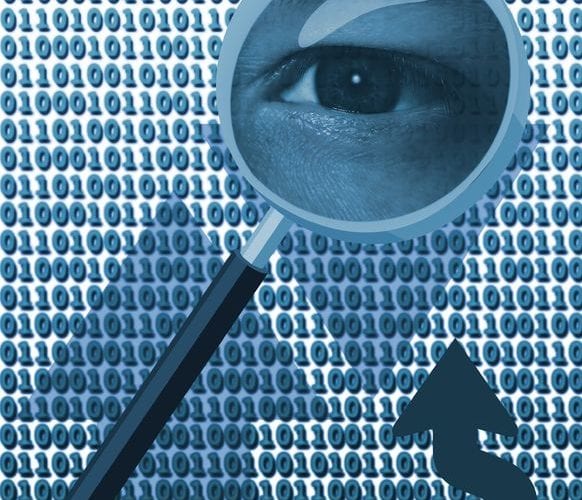I was doing a talk recently on the correlations between Facebook likes and personality traits when someone put their hand up and said: ‘so what?’ What does this mean – what does it matter to the average business that Facebook likes can indicate a person’s personality? It got me thinking about how to better communicate the relevance of social media and social media data and how it relates, not only to academic studies, but why it’s important, and indeed, good for all businesses to be involved and to understand the possibilities of quantifiable interactions.
The Facebook Study
Earlier this year, researchers from the University of Cambridge and Stanford University released a study which suggested that a person’s Facebook ‘Like’ profile could be more indicative of an individual’s personality traits and leanings than their friends, family members, even their partners. The study was conducted by getting 86,220 participants to complete a 100-item personality questionnaire, based on the International Personality Item Pool (IPIP) five-factor model, which measures each person’s responses and maps them to build a personality profile, based on the ‘big five’ personality traits.

Within each of these categories are sub-sets, more specific data points based on these over-arching personality points. Based on those responses, each participant’s personality profile was created, then matched against their Facebook ‘Like’s.

Now, on a small scale, this doesn’t mean a heap – a person who scored high for anxiety also likes Star Wars – so what? But on a wider scale – when matching this data over, say, 86,000 responses – correlations between interests solidify. Change the equation to 95% of people who scored .80 or above for anxiety also liked Star Wars and you’re starting to see that map. The researchers found that when the individual had 150 Facebook likes to go on, their model could predict their personality traits better than their family members. With 300 likes, it beat out their partners. And when you consider that the average Facebook user has liked more 220 things, you can see how this system could be used as an accurate predictor for a person’s traits and behaviours.
So what does that matter?
So what? What’s the big deal, right? It’s one thing for academics at some big name institution to some up with a complex methodology for indexing personality traits – and good for them – but what does this actually mean for you or I, for the everyday business owner? This is an interesting question, because you can’t just extract these sorts of insights in any easy way. It takes teams of data scientists to build such a model – months, years of learning to implement at such scale. What this research does highlight is the possibilities and potential of big data and social media. What it shows is that business owners should not be resisting social or avoiding it – they should be actively embracing and encouraging its use. Even if that business wasn’t overly interested or inclined to get involved themselves, the potential value of such insights for their own audiences are so great, so massive, that they should see these interactions as access to a whole new way of thinking.
How so? Consider this:
Ninety per cent of the world’s data has been generated over the last two years. Ninety per cent. That means everything that exists now, all the resources, status updates, like profiles – all but ten per cent of that was non-existent just two years ago. It’s not possible for any of us to truly understand what that means for business, for our day-to-day lives, for everything as we know it, because we haven’t had enough time to process all that info and figure out how it all relates. Definitely, where the emphasis has been on big data in recent years, the latest push is on how we rationalise and contextualise all that info. Big data has become a buzzword, people have become more wary, because for all the insights and intelligence we have at our fingertips, no one’s really sure how to utilise it. This comes back, somewhat, to futurist Ray Kurweil’s ‘Law of Accelerating Returns’, which stipulates that more advanced societies and technology progress at a faster rate than previous ones – so we’re now progressing faster than any generation before us, and thus, we can’t rationalise and compute all these new inputs all at once because our brains are still adapting and working to get up to speed.
This is, in large part, why we’re often not able to see the possibilities of big data and all those advancing connections – that, and the context for them is often presented in such a way that it’s difficult for someone without an advanced qualification in psychology or analysis to fully grasp the significance of a concept like Facebook knowing you better than your wife. The consideration that I see is actually two-fold: the future and the present.
The Future
As data advances, I see massive potential in all those reference points leading businesses and individuals to each other. In the case of the individual, let’s say that your Facebook profile – which we now know can be an accurate indicator of your personality – is only part of the overall puzzle.

Combining an individual’s activity on all three of these platforms would form an even clearer picture of who they are, not only in a personal sense, but professionally as well. When you consider that the next generation has grown up on social (remember, Facebook is now more than 10 years-old), and think about how much information each user has accumulated and logged online, you can imagine that if this data were combined, at scale, you would have a pretty accurate indicator of personality and career-oriented traits. This would enable you to make better decisions about employing people, build better understandings about the correlations between performance and personal traits, track the specific interests and personality types of the people who have purchased from you, enabling you to target future customers based on informed correlations.
At present, this data is not easily combined, as each platform keeps their own knowledge graph, but there are ways to extract such insights. There are methods you can use to build accurate personas – the next step is to build systems that track and expand your own data analysis in real-time. Imagine if you could build a system that logged the traits and behaviours of people who both Liked and went on to purchase from you, which updated in real-time. Imagine then that, armed with this knowledge, you could target your advertising or identify people to connect with based on those same traits, effectively highlighting your most relevant and responsive audience, based on data, and showing you new opportunities, every day. This is where the true power of social media data and data analysis lies – being able to locate and reach the right people, with the right content, at the right time – all the time. And with more and more data being entered, the reality of this scenario is becoming increasingly present. It pays to know what’s happening in this sector.
The Present
But again, that’s the future, that’s still some distance – and some cost – away from your day-to-day business, your real world grind. How does social media data deliver real, actionable, insights for you, right now? Really, with the amount of data we’re talking, how could it not?
For instance, let’s say members of your target audience – the people you need to get your brand name in front of – are active on social media. You can work out who, specifically, you need to be listening to, who your most likely prospects are, based on people who’ve previously purchased from you or people in positions that will make the call on whether or not to buy your stuff. You can analyse the presences of those target prospects and get an idea of what their questions are, what they’re discussing, what they’re most interested in. Let’s say you identify that a large portion of your audience is talking about a new TV show – you could use that in your own communications (contextually relevant, of course) and create content that’s more likely to resonate with the people you need to reach based on their specific interests.
Or you could work out who they listen to – word-of-mouth is the core thread of social selling. If you can work out that your target audience is listening to a specific influencer or influencers, you can examine their profiles, work out what they’re interested in, then reach out to them and connect to your target audience that way, by connecting through their established information sources and getting your name in front of them.
You can analyse your fans, followers, lurkers – there are any number of free or freemium social tools out there that enable you to extract specific insights and data about your social media audiences – both current and desired. And as the amount of interactions being undertaken online increases, so too do your chances of locating the information you need in your research. Right now, you can do this, right now, you can analyse the profiles of your business and your competitors and extract data insights and virtually no cost.
The Interaction Evolution
The Facebook Like study, to me, actually just reinforced or legitimised the power of social media data. Many people still see social as a fad, as nothing more than kids sharing pictures of themselves and/or their food. But if academia has found that those very actions can paint an extremely accurate picture of who a person is, you must also see that such data can form a map connecting your brand to your audience. Even if you’re not interested in social, if you’re not on the bandwagon, so to speak, have no interest in hashtags and LOLs and cute cats, you still have to recognise that social is the most powerful audience insights tool ever created. As Jay Z says:
If you can’t respect that, your whole perspective is whack
Maybe your audience isn’t on it – but are you sure? Maybe your customers don’t use it – but will they soon? The way people communicate has changed, the way we interact is evolving. Right now, you can livestream your life to the world, a level of connectivity that is unprecedented, would have been unfathomable just years ago. And that evolution is accelerating at a rate that we may not even be able to fully comprehend. What we do know is data. That which is happening is trackable, traceable, laid-out and accessible to anyone who cares to look. Used well, this can provide your business with a level of insight you’d never have even considered.
And that is good for business!



